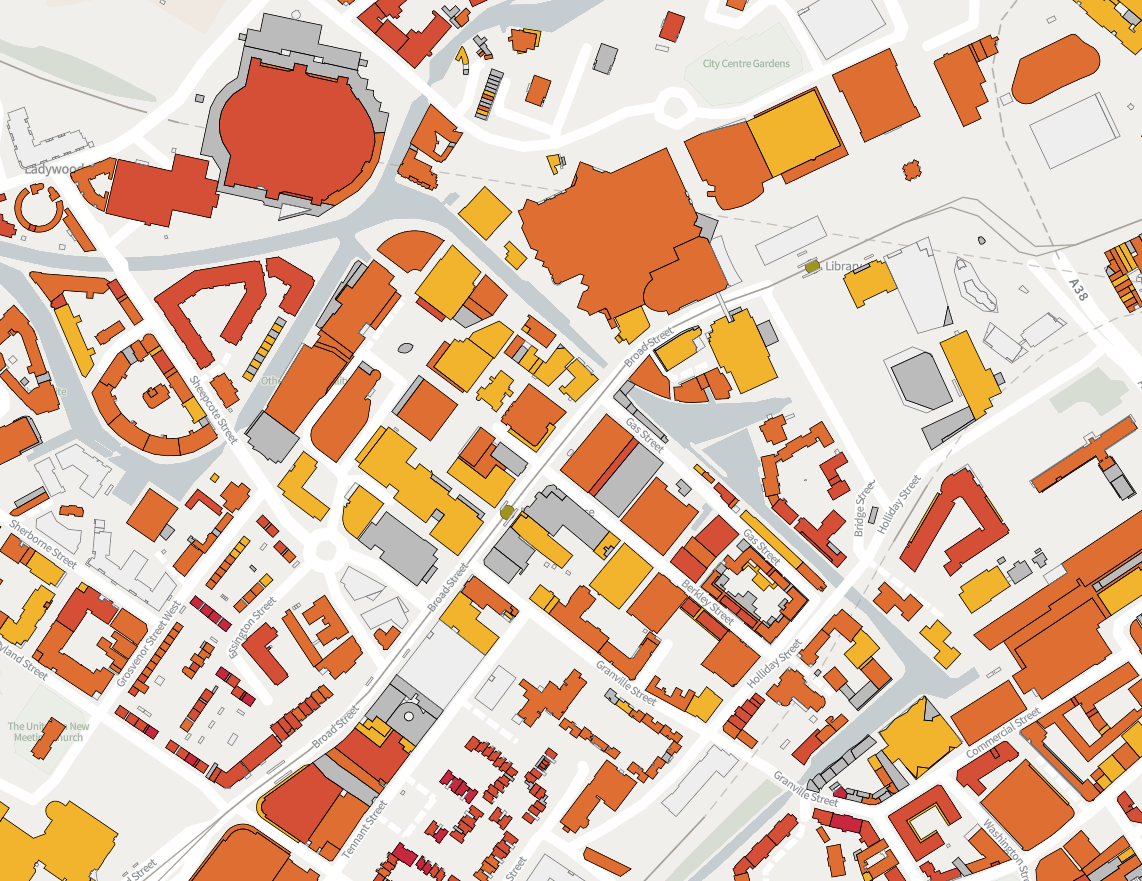About Solar Wizard
The new household and community solar assessment calculator
In just a few clicks it can tell you how much electricity you might be able to generate from rooftop solar panels on your house, or any home or other building in England, Scotland or Wales.
It provides quick and independent predictions about the viability of solar PV on single buildings or groups of buildings.
Solar Wizard has been designed to be used by individual households, communities and local authorities.
You can use it to help you decide whether solar PV might be a good investment for own home. Or a group of neighbours can use it as part of a wider community-energy project.
Our aim is to provide you with the confidence to take the next steps.
Use of Solar Wizard is governed by our Terms and Conditions.

What Solar Wizard can do
Solar Wizard can tell you how much power could be generated from solar PV panels installed on the roof of a specific building. It produces estimates for:
- Which areas of the roof might be most suitable.
- How much power could be generated per year or month-by-month on average.
- If the solar panels might be subject to shading from nearby buildings and other landscape features.
- What it might cost to install an array.
- How much money might you save on electricity bills.
- How much carbon could be saved per year.
Find out more about how Solar Wizard works.
See the wizard in action
There are three different functionalities available through Solar Wizard:
1. Individual building look-up. See the potential of any building we have data for across England, Wales and Scotland simply by inputting the postcode. Try for yourself on our Try the Wizard page.
2. Solar mapping. View the solar potential of buildings in an area through our map view. You can see which maps we’ve got available in our local authorities section on our main page. If you’d like to ask about how to unlock this for your area get in touch with us at solar@cse.org.uk.
3. Compare the solar potential across multiple buildings and run financial modelling. You’re able to compare the solar potential of multiple buildings across an area to determine which are most suitable for solar PV. You’re also able to run financial modelling to see which have the best yield across an area. This is only available for users issued with logins. If you’d like to find out how you can unlock this get in touch with at solar@cse.org.uk.
What Solar Wizard can't do
Solar Wizard is no substitute for a site visit by an experienced installer of solar panels.
Rather, the tool is designed to provide an indication of likely viability of a solar array on a particular building as a very first step in the process of going solar.
For example, Solar Wizard doesn’t know what your roof is made of or if it is strong enough to support solar panels. The only way to know this for sure is for someone to attend the property to check. Similarly, the tool doesn’t take into account local electricity grid constraints, so your installer will need to advise.
Solar Wizard is heavily reliant on the quality and coverage of the datasets that underpin it. As an example, we use LiDAR data from the Environment Agency to detect the layout of roofs. This provides a 1-metre resolution and will therefore sometimes miss roof features such as small dormer windows or ducting or pipework.
More detail on the limitations of the Solar Wizard model can be found here.
Glossary
Confused by the hocus pocus? The terms used in the Solar Wizard are defined in our glossary.
Birth of the Wizard
Solar Wizard was created by analysts and developers at the Centre for Sustainable Energy (CSE). It was funded by the Small Business Research Initiative’s ‘Prospering from the Energy Revolution’ programme. Find out more about why we created Solar Wizard on our project page.
The work has benefitted from expert guidance from Bath and West Community Energy and Sharenergy, as well as an experienced project steering group with representatives from local government, academia and the community energy sector.
Solar Wizard uses data from Ordnance Survey and has been set up to comply with their licensing terms. We pay royalties for the data that we share in our individual building interface. Where a local authority has commissioned us to make our mapping interface available for their area, the data is shared under their Public Sector Geospatial Agreement and their licence number is provided.
By using this tool you agree to be bound by the terms of the PSGA End User Licence (see here for further details).
